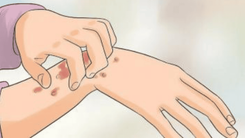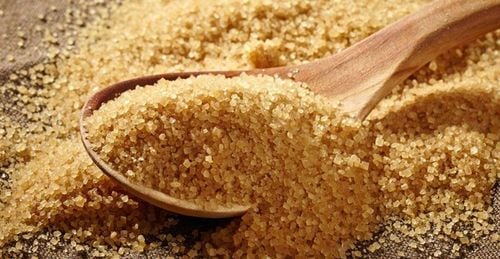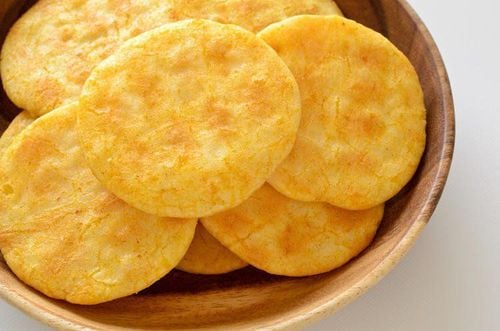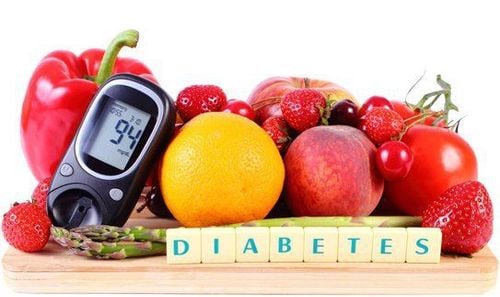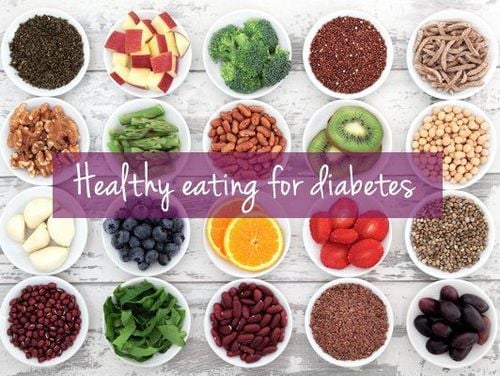Brown rice is a healthy whole grain. Unlike white rice, which contains only the starchy endosperm, brown rice retains the nutritious germ and bran. However, despite being more nutritious than white rice, brown rice is still high in carbs. So, can people with diabetes eat brown rice?
1. Is it okay for diabetics to eat brown rice?
Brown rice is a healthy addition to a balanced diet, even if you have diabetes. However, it is important to monitor portion sizes and be aware of how this food affects your blood sugar levels.
General health benefits of brown rice
Brown rice has a diverse nutritional profile, including fiber, antioxidants, and several vitamins and minerals.
Specifically, this whole grain is high in flavonoids, which are powerful antioxidants. Eating foods rich in flavonoids has been linked to a reduced risk of chronic diseases, including heart disease, cancer, and Alzheimer's disease.
There is growing evidence that fiber-rich foods like brown rice are beneficial for digestive health and may reduce the risk of chronic diseases. They can also increase feelings of fullness and help with weight loss.
Nutritional benefits
One cup (202 grams) of cooked long-grain brown rice provides:
- Calories: 248
- Fat: 2 grams
- Carbs: 52 grams
- Fiber: 3 grams
- Protein: 6 grams
- Manganese: 86% of Daily Value (DV)
- Thiamine (B1): 30% DV
- Niacin (B3): 32% DV
- Pantothenic acid (B5): 15% DV
- Pyridoxine (B6): 15% DV
- Copper: 23% DV
- Selenium: 21% DV
- Magnesium: 19% DV
- Phosphorus: 17% DV
- Zinc: 13% DV
As you can see, brown rice is an excellent source of magnesium. Just 1 cup (202 grams) provides nearly all of your daily requirement for this mineral, which is essential for bone health, muscle contractions, nerve function, wound healing, and even blood sugar regulation.
Moreover, brown rice is a good source of riboflavin, iron, potassium, and folate.
Benefits of brown rice for people with diabetes
Thanks to its high fiber content, brown rice has been shown to significantly reduce blood sugar levels after meals in overweight people and those with type 2 diabetes.
Controlling blood sugar levels is a key strategy for preventing or delaying the progression of diabetes.
In a study of 16 adults with type 2 diabetes, eating 2 servings of brown rice significantly reduced blood sugar levels and hemoglobin A1c after meals (this is an indicator of blood sugar control), compared to people with diabetes who ate white rice.

Meanwhile, an 8-week study of 28 adults with type 2 diabetes showed that those who ate brown rice at least 10 times a week had significant improvements in blood sugar levels and endothelial function, which is an important measure of heart health.
Brown rice can also help improve blood sugar control by aiding in weight loss. In a 6-week study of 40 overweight or obese women, eating 3/4 cup (150 grams) of brown rice daily significantly reduced weight, waist circumference, and body mass index (BMI) compared to those who ate white rice.
Weight loss is a very important factor, as an observational study of 867 adults found that those who lost 10% or more of their body weight within 5 years of being diagnosed with type 2 diabetes were twice as likely to have their disease in remission during that time.
Protecting the body against type 2 diabetes
Beyond the potential benefits for people with diabetes, brown rice may even reduce the risk of developing type 2 diabetes in the first place.
A study on 197,228 adults found that eating at least 2 servings of brown rice per week significantly reduced the risk of developing type 2 diabetes. Moreover, simply swapping 1/4 cup (50 grams) of white rice with brown rice can reduce the risk of this disease by 16%.
Although the mechanism is not fully understood, it is believed that the higher fiber content in brown rice is partly responsible for this protective effect. In addition, brown rice has a higher magnesium content than white rice, which is also associated with a reduced risk of type 2 diabetes.
2. What is the glycemic index of brown rice?
The glycemic index (GI) measures how much a food raises blood sugar levels and can be a useful tool for people with diabetes.
Foods with a high GI raise blood sugar levels more than foods with a medium or low GI. Therefore, eating more foods in the low and medium categories can help control blood sugar levels.
Cooked brown rice has a GI of 68, which is classified as a medium-GI food.
Here are some examples of other foods classified by their GI score, including:
- High GI foods (score 70 or above): white bread, corn flour, instant oatmeal, white rice, crackers, white potatoes, watermelon
- Medium GI foods (score 56-69): Couscous, muesli, pineapple, sweet potato, popcorn
- Low GI foods (score 55 or below): oatmeal, barley, lentils, beans, non-starchy vegetables, carrots, apples, dates
Meanwhile, the GI of white rice is 73, so it is classified as a high GI food. Unlike brown rice, white rice is lower in fiber and is therefore digested more quickly, causing blood sugar levels to spike.
People with diabetes are often encouraged to limit their intake of high-GI foods.
To help lower the overall GI of your meal, you should eat brown rice with low-GI foods, protein foods, and healthy fats.
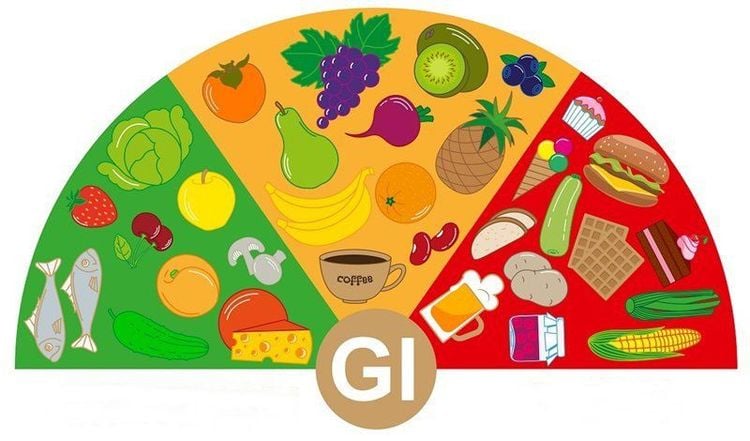
3. Portion size and meal quality
Managing your total carb intake is an important part of controlling your blood sugar. Therefore, you should pay attention to the amount of brown rice you eat in a meal.
Since there is no recommended amount of carbs to eat, you should base your optimal intake on your goal of controlling blood sugar and your body's response to carbs.
For example, if your goal is 30 grams of carbs per meal, you should limit your serving of brown rice to 1/2 cup (100 grams), which contains 26 carbs. The rest of the meal can then be taken from low-carb foods such as chicken breast and green vegetables.
In addition to watching portion sizes, it is important to remember that whole grains are just one part of a balanced diet. You should try to incorporate other nutritious foods into each meal, including lean protein, healthy fats, fruits, and low-carb vegetables.
Consuming a varied and balanced diet is a diet rich in whole foods and limited in processed and refined products. This diet not only provides additional vitamins and minerals but also helps maintain stable blood sugar levels.
In fact, a study on 229 adults with type 2 diabetes showed that those with a higher quality diet had significantly better blood sugar control than those with a poor diet quality.
You should consult with a healthcare professional to determine which balanced diet is right for you.
4. How to cook brown rice
To cook brown rice, you need to:
- Rinse the rice with cool water to remove excess starch and dirt on the surface of the rice.
- Put the rice in a pot with about 1 1/2 cups of water for each cup of dry brown rice.
- Bring the water to a boil.
- Reduce heat to low and cover the pot.
- Let the rice simmer for about 20 minutes before turning off the heat.
- Let the rice cool and steam for an additional 10 minutes before serving.
You can also use a rice cooker, which will heat the rice until it is cooked and then automatically switch to the warm setting. After cooking, leave the rice on the warm setting for 5 to 10 minutes so that the rice is not sticky.
Brown rice can be a healthy side dish or a basic ingredient for many different recipes. Here are some ways you can try:
- Use cooked brown rice to make a healthy soup.
- Stir-fry vegetables and meat or tofu, then add some brown rice.
- Combine brown rice with ground beef and add some of your favorite seasonings.
- Combine brown rice with some milk, sugar, and eggs to make rice pudding.
To arrange an appointment, please call HOTLINE or make your reservation directly HERE. You may also download the MyVinmec app to schedule appointments faster and manage your reservations more conveniently.
Reference sources: webmd.com, healthline.com


